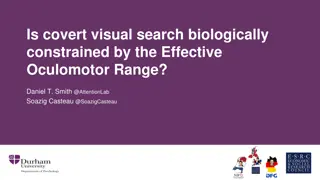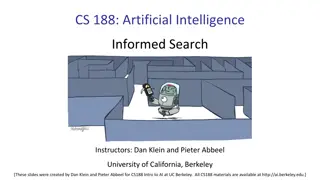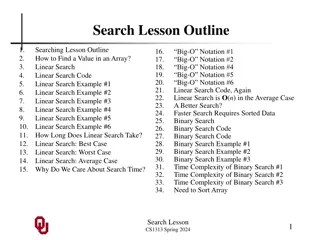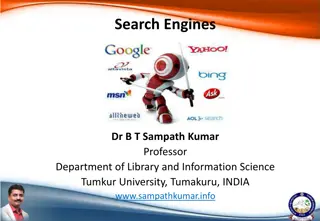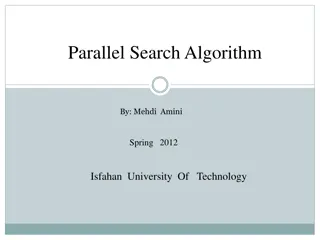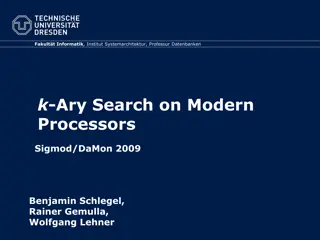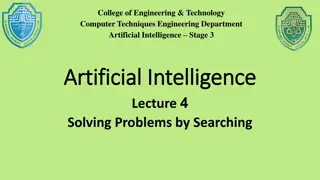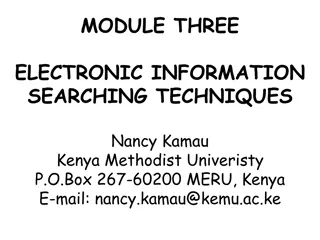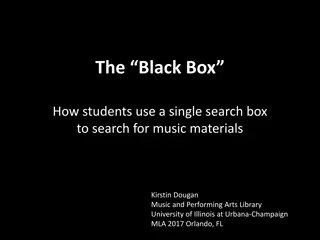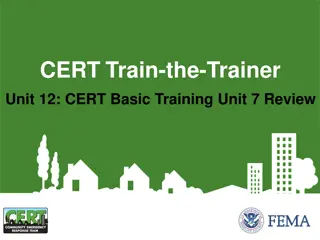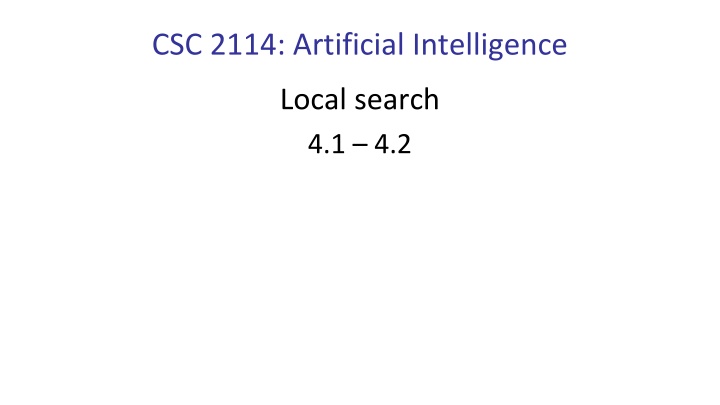
Local Search Algorithms for Optimization Problems
Learn about local search algorithms like Hill Climbing and Simulated Annealing used in optimization problems where the goal state is the solution. Explore methods such as random restarts and escaping from local maxima to find global optima efficiently.
Download Presentation

Please find below an Image/Link to download the presentation.
The content on the website is provided AS IS for your information and personal use only. It may not be sold, licensed, or shared on other websites without obtaining consent from the author. If you encounter any issues during the download, it is possible that the publisher has removed the file from their server.
You are allowed to download the files provided on this website for personal or commercial use, subject to the condition that they are used lawfully. All files are the property of their respective owners.
The content on the website is provided AS IS for your information and personal use only. It may not be sold, licensed, or shared on other websites without obtaining consent from the author.
E N D
Presentation Transcript
CSC 2114: Artificial Intelligence Local search 4.1 4.2
Local search algorithms In many optimization problems, path is irrelevant; the goal state is the solution Then state space = set of complete configurations; find configuration satisfying constraints, e.g., n-queens problem; or, find optimal configuration, e.g., travelling salesperson problem In such cases, can use iterative improvement algorithms: keep a single current state, try to improve it Constant space, suitable for online as well as offline search More or less unavoidable if the state is yourself (i.e., learning)
Hill Climbing Simple, general idea: Start wherever Repeat: move to the best neighboring state If no neighbors better than current, quit
Heuristic for n-queens problem Goal: n queens on board with no conflicts, i.e., no queen attacking another States: n queens on board, one per column Heuristic value function: number of conflicts
Hill-climbing algorithm function HILL-CLIMBING(problem) returns a state current make-node(problem.initial-state) loop do neighbor a highest-valued successor of current if neighbor.value current.value then return current.state current neighbor
Global and local maxima Random restarts find global optimum Random sideways moves Escape from shoulders Loop forever on flat local maxima
Hill-climbing on the 8-queens problem No sideways moves: Succeeds w/ prob. 0.14 Average number of moves per trial: 4 when succeeding, 3 when getting stuck Expected total number of moves needed: 3(1-p)/p + 4 =~ 22 moves Allowing 100 sideways moves: Succeeds w/ prob. 0.94 Average number of moves per trial: 21 when succeeding, 65 when getting stuck Expected total number of moves needed: 65(1-p)/p + 21 =~ 25 moves
Simulated annealing Resembles the annealing process used to cool metals slowly to reach an ordered (low-energy) state Basic idea: Allow bad moves occasionally, depending on temperature High temperature => more bad moves allowed, shake the system out of its local minimum Gradually reduce temperature according to some schedule
Simulated annealing algorithm function SIMULATED-ANNEALING(problem,schedule) returns a state current problem.initial-state for t = 1 to do T schedule(t) if T = 0 then return current next a randomly selected successor of current E next.value current.value if E > 0 then current next else current next only with probability e E/T
Simulated Annealing Theoretical guarantee: Stationary distribution (Boltzmann): If T decreased slowly enough, will converge to optimal state! Proof sketch (for reversible case: x y iff y x): Let P(x), P(y) be the equilibrium occupancy probabilities at T Let P(x y) be the probability that state x transitions to state y Assume E(y) > E(x) [and the algorithm seeks high values of E]
Simulated Annealing Is this convergence an interesting guarantee? Sounds like magic, but reality is reality: The more downhill steps you need to escape a local optimum, the less likely you are to ever make them all in a row Slowly enough may mean exponentially slowly Random restart hillclimbing also converges to optimal state Simulated annealing and its relatives are a key workhorse in VLSI layout and other optimal configuration problems
Local beam search Basic idea: K copies of a local search algorithm, initialized randomly For each iteration Generate ALL successors from K current states Choose best K of these to be the new current states Why is this different from K local searches in parallel? The searches communicate! Come over here, the grass is greener! What other well-known algorithm does this remind you of? Evolution! Or, K chosen randomly with a bias towards good ones
Genetic algorithms Genetic algorithms use a natural selection metaphor Resample K individuals at each step (selection) weighted by fitness function Combine by pairwise crossover operators, plus mutation to give variety
Example: N-Queens Does crossover make sense here? What would mutation be? What would a good fitness function be?
Example: Siting airports in Romania Place 3 airports to minimize the sum of squared distances from each city to its nearest airport Airport locations x = (x1,y1), (x2,y2), (x3,y3) City locations (xc,yc) Ca = cities closest to airport a Objective: minimize f(x) = a c Ca(xa - xc)2 + (ya - yc)2
Handling a continuous state/action space 1. Discretize it! Define a grid with increment , use any of the discrete algorithms 2. Choose random perturbations to the state a. First-choice hill-climbing: keep trying until something improves the state b. Simulated annealing 3. Compute gradient of f(x) analytically
Finding extrema in continuous space Gradient vector f(x) = ( f/ x1, f/ y1, f/ x2, )T For the airports, f(x) = a c Ca (xa - xc)2 + (ya - yc)2 f/ x1 = c C1 2(x1 - xc) At an extremum, f(x) = 0 Can sometimes solve in closed form: x1 =( c C1xc)/|C1| Is this a local or global minimum of f? Gradient descent: x x - f(x) Huge range of algorithms for finding extrema using gradients
Summary Many configuration and optimization problems can be formulated as local search General families of algorithms: Hill-climbing, continuous optimization Simulated annealing (and other stochastic methods) Local beam search: multiple interaction searches Genetic algorithms: break and recombine states Many machine learning algorithms are local searches






